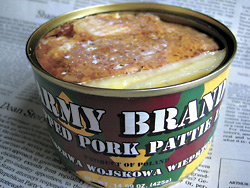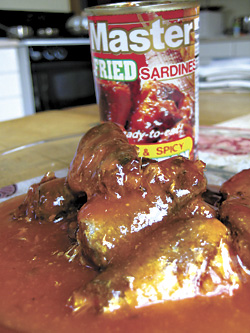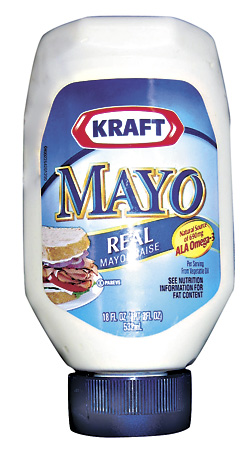Foodstuff: Jin Yang Silkworm Pupa
Where to Find It: H-Mart or Paldo World, Federal Way
You may not know this, but most likely, you stink.
Don’t feel bad about it. I probably stink, too.
You see, we’re meat eaters, and according to a recent study, the world’s vegans — or vegansexuals, who engage in “cruelty-free sex,” as the study’s Kiwi author would have it—are put off by omnivores, often “rejecting meat eaters as intimate partners.”
According to a New York Times story that cited the study, it’s not just that politics gets in the way. For many vegans, something more visceral puts them off the scent.
“I couldn’t think of kissing lips that allow dead animal pieces to pass between them,” the Times quotes one 49-year-old vegan woman who was surveyed as saying.
For others, it’s that meat eaters stink. “Nonvegetarian bodies smell different to me,” the paper quotes another vegan as explaining. “They are, after all, literally sustained through carcasses—the murdered flesh of others.”
How must I smell, then, after tucking into a can of Jin Yang Silkworm Pupa? Sure, these aborted arthropods may weave a stunning fabric, but stewed in a milky liquid and interred in tin? It’s enough to turn a meat eater’s nose.
To be kind, they look sort of like coffee beans. To be less kind (if more accurate), they look like outsize maggots whose leathery hide has been dyed toilet-bowl brown.
But if they look wretched and smell even worse, there’s not much in life that can prepare you for a mouthful of pupae, silkworm or other.
Silkworms, of course, have virtues subtler than being marginally comestible. They create silk, after all, a fabric so refined that the silkworm as we know it no longer exists in the wild. Instead, its little legs have shriveled over the years to useless dangling appendages, and the adult moths cannot fly. So, like bees and vegans who love them, the contemporary silkworm is a thoroughly modern social construct.
But I digress. Perhaps that’s because of the considerable nastiness involved in eating the vile little grubs. You see, silkworm pupae have an exoskeleton. One can imagine that that would be a benefit: crunchy on the outside, moist and buttery on the inside—that sort of thing.
But here we must remember that these are pupae, meaning that their exoskeletons are only partially formed. Steep that developing organic matter in a cloudy juice, and the result is, well, something shy of crisp. In fact, the texture is more akin to a damp cereal box. Oh, if only it had a flavor to match!
Instead, I find myself in uncharted (and cloudy) gustatory waters. It’s remarkable. I’ve really never tasted anything quite like it. It’s not that it tastes bad (it tastes terrible), but I don’t have a ready vocabulary to describe what’s taking place inside my mouth.
Does it taste like the untreated uterine lining of an aged sow? Perhaps. After all, I don’t think that the good folks at Jin Yang can reasonably be expected to remove the thousands of mid-guts they must end up canning each day.
Or maybe it tastes more like a shrimp stew made exclusively of the blackest intestinal tracts. Perhaps. I really don’t know.
But I do know this: If this is anything like how we meat eaters smell to vegansexuals, it’s going to be a long and lonely winter.
Seen a foodstuff you’re too timid to try? Malcolm will eat it! E-mail particulars to: keepitdown@seattleweekly.com.








